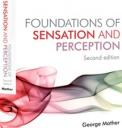The Science of Senses
The modern designer has challenges at four levels. She must design things that work (engineering design), are easy to use (usability), delight our senses (sensorial design) and move our hearts and minds (cognitive design). For example, you can design a:
1. Multi-function office chair
2. Multi-function office chair that I can adjust with ease
3. Multi-function office chair that I can adjust with ease and is beautiful to look at
4. Multi-function office chair that I can adjust with ease, is beautiful to look at and makes me feel like a “master of the universe” and stimulates bold thinking.
All four of these levels overlap, especially when it comes to
sensorial and cognitive design. After all, perception is a
cognitive process. A solid scientific understanding of
perception is essential for excellence in cognitive design.
 The book I have recommended in the past to students that are very serious about gaining a scientific level (physics, chemistry, physiology, biology) on this topic, Foundations of Sensation and Perception, has just come out with in a second addition. There is a free sample chapter on the website for the book that clearly illustrates how the author treats the subject.
The book I have recommended in the past to students that are very serious about gaining a scientific level (physics, chemistry, physiology, biology) on this topic, Foundations of Sensation and Perception, has just come out with in a second addition. There is a free sample chapter on the website for the book that clearly illustrates how the author treats the subject.
It is a good book if you are new to the topic yet it is rigorous. The treatment is low-level including the physics of stimulus (light, sound, etc.) and the chemistry, anatomy and biology of our sense organs and systems. It includes a new chapter on multi-sensory perception.
Often cognitive designers just focus on the psychology of perception, for example “good looking things work better”, and obviously that is key. Taking the time to gain a scientific understanding of the processes of perception can position you well to solve harder problems and possibly produce breakthrough designs.